Earth SYstems Lecture 11
1/22
There's no tags or description
Looks like no tags are added yet.
Name | Mastery | Learn | Test | Matching | Spaced |
|---|
No study sessions yet.
23 Terms
Earth Surface Processes
-Earth's turbulent atmosphere, moving tectonic plates, flowing rivers, and many forms of life shape the Earth's surface features.
-The resulting environments (mountains, hills, valleys, plains, tundras, deserts, coasts, estuaries, deltas, continental shelves, deep ocean abyssal plains, etc.) interact with life, forming ecosystems.
-The landscape, soils, sediments and rocks provide a record of Earth surface processes that extend back through Earth's history.
The Rock Cycle

Geomorphology
-The scientific study of the origin and evolution of landforms, created by processes operating at or near the earth's surface.
-Geomorphic processes, are controlled by environmental factors (physical, chemical and biological), and act on earth surface materials to produce landforms.
-Linked assemblages of landforms are called landscapes.
-Landscapes and the processes that form them and the materials that they are made of are landsystems.
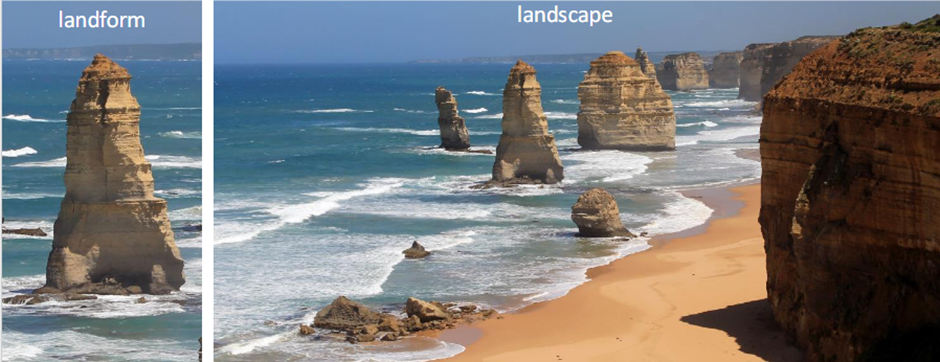
Geomorphic Processes
• Plate Tectonics
• Weathering
• Erosion
• Entrainment
• Transport
• Deposition
• Mass Movement
• Climate
• Biota
The relationships between these processes are controlled by environmental conditions such as temperature and are reflected in the resulting landforms.
Transformation and Transfer of Materials
-Landforms are created by: material transformation (e.g. weathering) altering the properties of the material (strength, density, structure); and material transfer (e.g. erosion and transport).
Over time, processes of weathering weaken the rock.
What happens when granite is weathered chemically?
Na-feldspar and K-feldspar undergo hydrolysis to form kaolinite (a clay mineral) and Na+ and K+ ions.
Biotite (and amphibole) undergo hydrolysis to form clay minerals, and undergo oxidation to form iron oxides.
The quartz (and muscovite if present) remains as residual minerals due to high resistance to weathering.
The weathered rock fragments become sediment/soil and ions may be washed away.
Material and Process
• Geomorphic processes often involve material moving downslope.
• Gravity, shear stress, thresholds, and friction are important
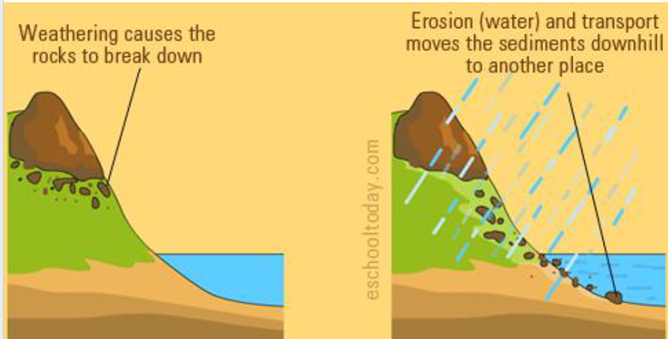
Erosion, Entrainment, Transport, Deposition
• Erosion - surface processes that initiate movement of material.
• Entrainment - processes that set a particle in motion and incorporate it into a flow.
• Weathered material is thus removed from its original site.
• Solid (and dissolved) material is transported (generally down slope) and deposited at a different site.
• The material removed from an area is called the sediment yield, often presented as mass per unit area of catchment (or drainage basin).
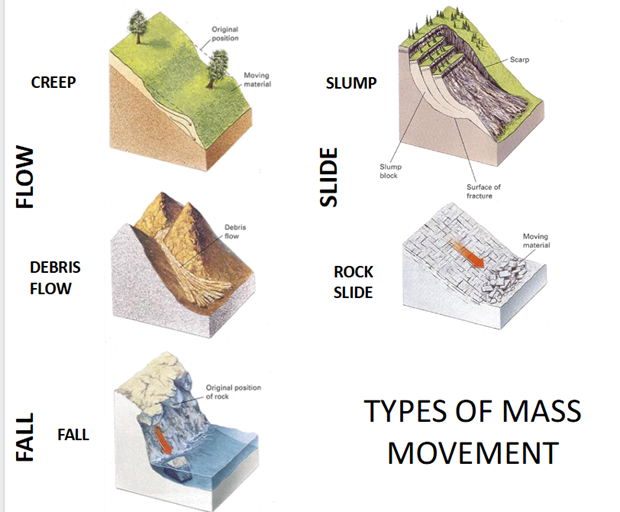
Frost Heave
When soil freezes ice crystals grow in the soil and the volume increases. The soil expands away from the solid boundary. When ice melts, soil settles vertically. Soil freezes and thaws repeatedly.
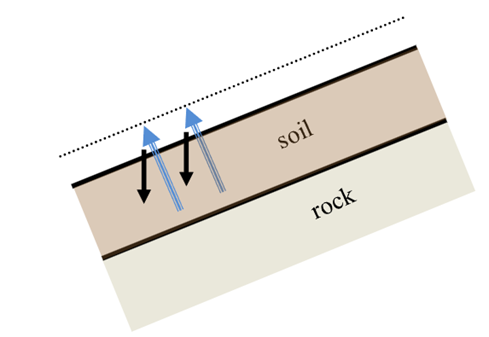
Solifluction
When the surface soil freezes, a lot of ice crystals grow in the soil and the volume increases. When the surface thaws the top layer flows because of the large liquid water content, over the permanently frozen ground.
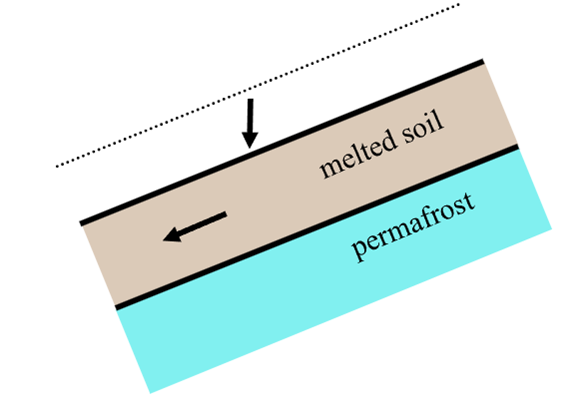

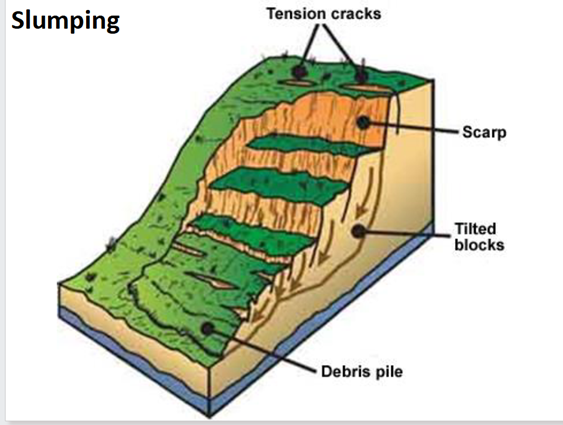
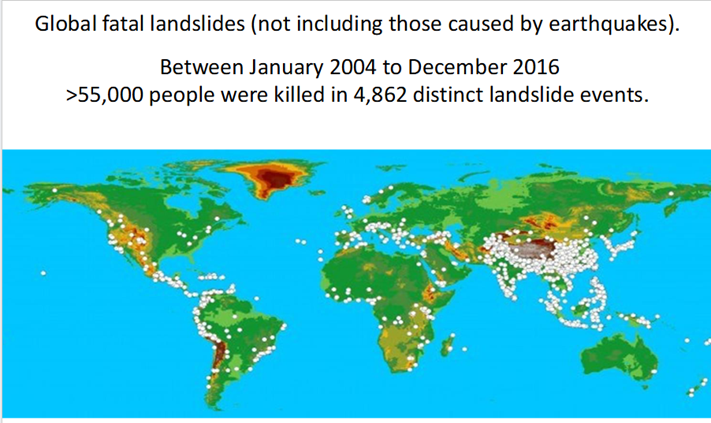
At Sea- similar processes
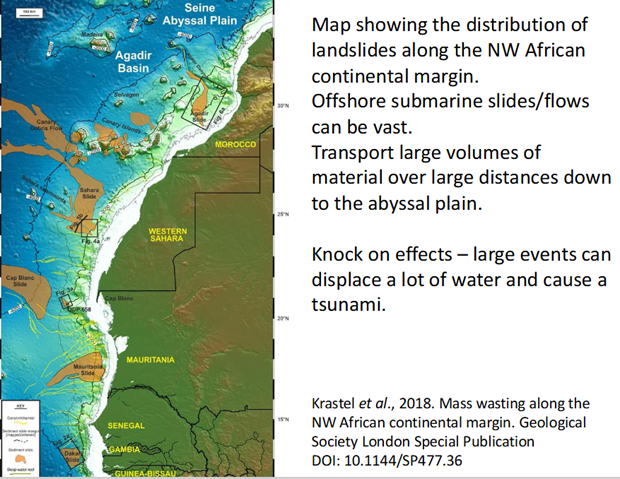
Mountain Belt Erosion

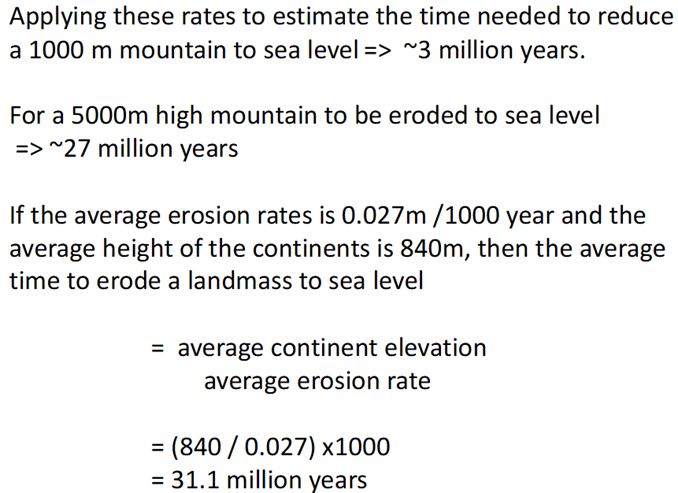
Earth’s Age and Erosion of Mountains
Earth is ~ 4500 million years old.
Erosion rates on continents are such that high mountains should be reduced to sea level in a few tens of millions of years.
High mountains still exist on Earth because of Tectonics They keep getting created!
Transport in Fluid FLows
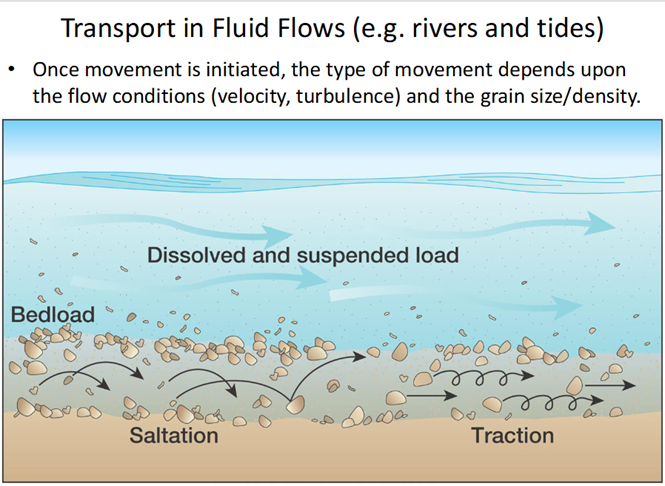
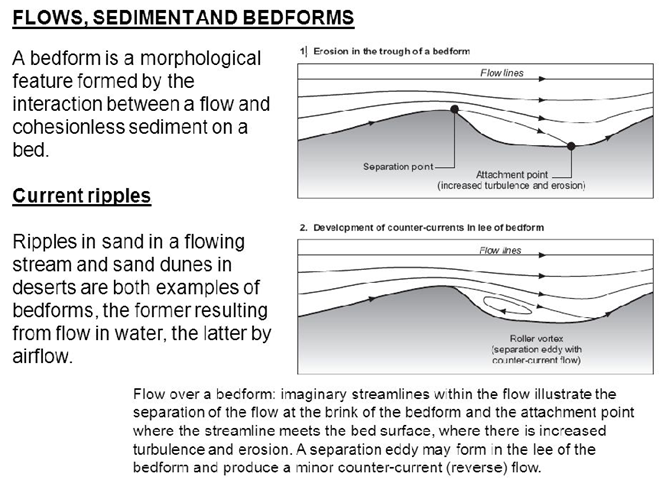
Coastal Erosion
• Occurs where removal of sediment exceeds supply of sediment.
• More than 70% of the world’s sandy coastlines have undergone net erosion over the last few decades.
Seawalls- coastal protection
• Expensive hard engineering solution to coastal erosion.
• Often used to protect coastal towns and cities.
• Seawalls are constructed from a variety of materials, such as: reinforced concrete, boulders, steel, or gabions.
• Poor designs can increase erosion, rather than reduce it.
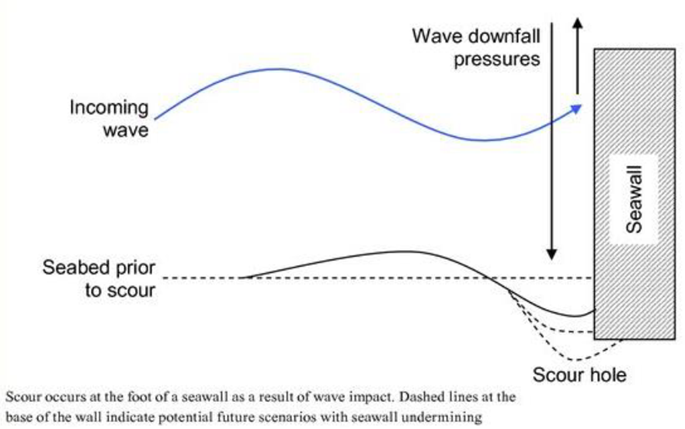
Working with nature: Sea Palling Coastal Defences
• The first four northernmost breakwaters (stage 1) constructed in 1993-1995.
• Followed by a second stage of five breakwaters, completed by 1997.
• Second stage utilised a different design to the first stage.
• The project was initially aimed to reduce the incoming wave energy on the Sea Palling coastline by 60%.
• The structures were designed to survive a 1:50 yr storm event, or a wave height of +3.7m from the Ordnance Datum Newlyn (ODN)
Working with Nature: Sandscaping

Erosion, Transport, Deposition
• Erosion - the action of processes (such as water flow or wind), which initiate movement of sediment and soil.
• Transport - the movement of solid particles (sediment, soil), typically due to a combination of gravity acting on the particles, and/or the movement of the fluid in which the sediment is entrained.
• Deposition - the process in which sediments and soil are added to a landform, building up layers of material.
LEADS TO ACCUMULATION
Erosion can be small or large scale
Time is important
• A small-scale process occurring over a very long time (1000s of years or more), can create a large effect, e.g. rivers cutting valleys.
• A large-scale (catastrophic) process can create a large effect over a short period of time, e.g. landslide, volcanic eruption.
• The magnitude of a process can change through time, at a variety of scales (milliseconds to millions of years)
• Erosion (and entrainment) - getting sediment moving is harder
• Transport - keeping sediment moving is easier
• Deposition – when stuff stops moving
• Leads to accumulation.

• Hjulstrom Curve: an erosion, transport and deposition thresholds diagram for sediment grains of different sizes in unidirectional flow.
• Erosion threshold: the point at which measurable, or significant grain motion occurs.


Gravity
• Because gravity acts on material, geomorphic processes often involve material moving downslope.
Material
• The material is usually sediment or rock.
• Sediment is often grains of rock and/or single minerals, but can also be biological (e.g. wood) or man-made (e.g. plastic).
• Grain is the term used to describe a particle of sediment.
• Grain size is a key property of sediment, which partly determines when and how the grain moves.
• Grains less than ~100μm are cohesive (sticky).

Entrainment
Forces acting on a sediment grain

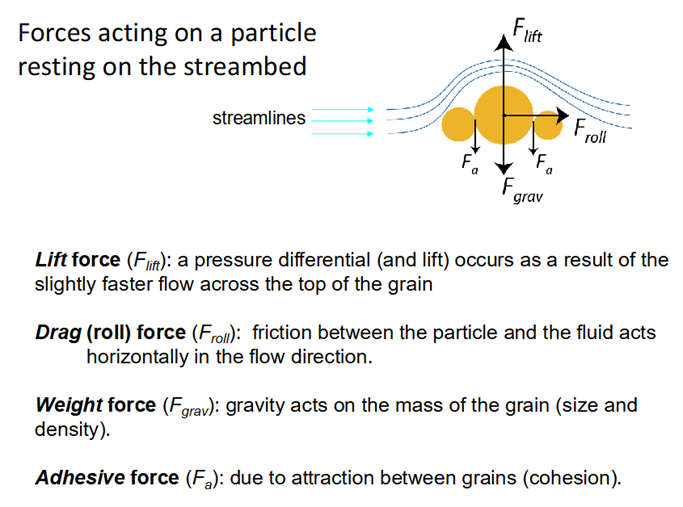
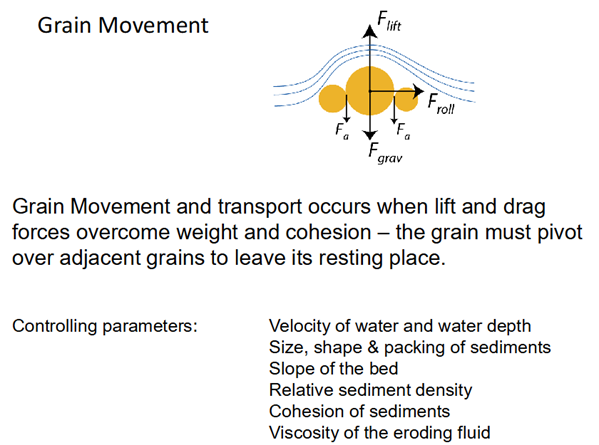
Once in motion, grains may move as floating load, suspension load, or bedload. Bedload is grains rolling, sliding and bouncing (saltating).
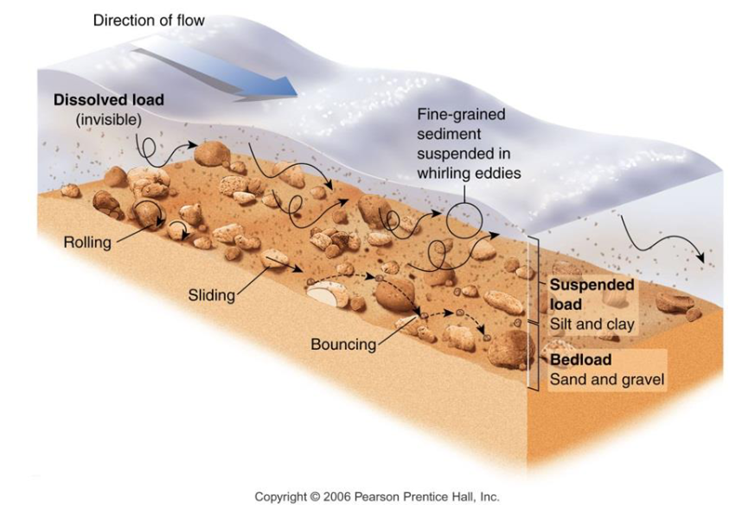
•Suspended load: grains held above the bed by fluid turbulence.
•Wash load: Part of the suspended load -- grains move right through the system in suspension due to their very small particle size (e.g., clay particles). There is also dissolved load.
Raindrop Erosion
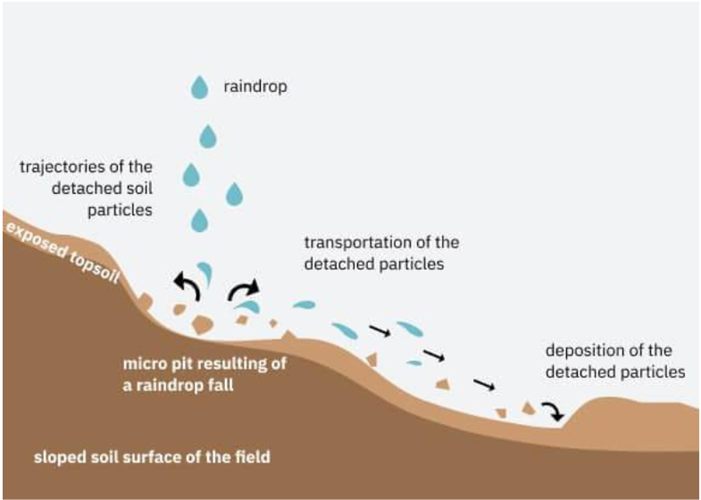
Rain falling on land surface will tend to infiltrate. The rate at which it infiltrates is limited by soil porosity and permeability and infiltration capacity.
If the surface pores become filled, OR water arrives on the surface faster than it can infiltrate, it will pool or flow off.
Types of Erosion
Sheet Erosion - thin film of water over an area moving down slope.
Rill Erosion – water is channelled into rills where flow is more efficient.
Gully erosion – rill size increases with time and downstream by rill confluences forming a gully. A gully may also form by erosion upstream from a steam.

Current generated sedimentary structures
Dominantly depositional features include:
• Imbrication – preferred orientation of grains in the directions of flow, in an overlapping pattern.
• Current ripples – produce ripple cross lamination, flaser bedding, and lenticular (lensen) bedding.
• Dunes (sometimes called mega-ripples) – produce cross bedding.
• Unit bars (sometimes called sand waves, transverse bars, etc.) – tend to produce planar cross bedding.
